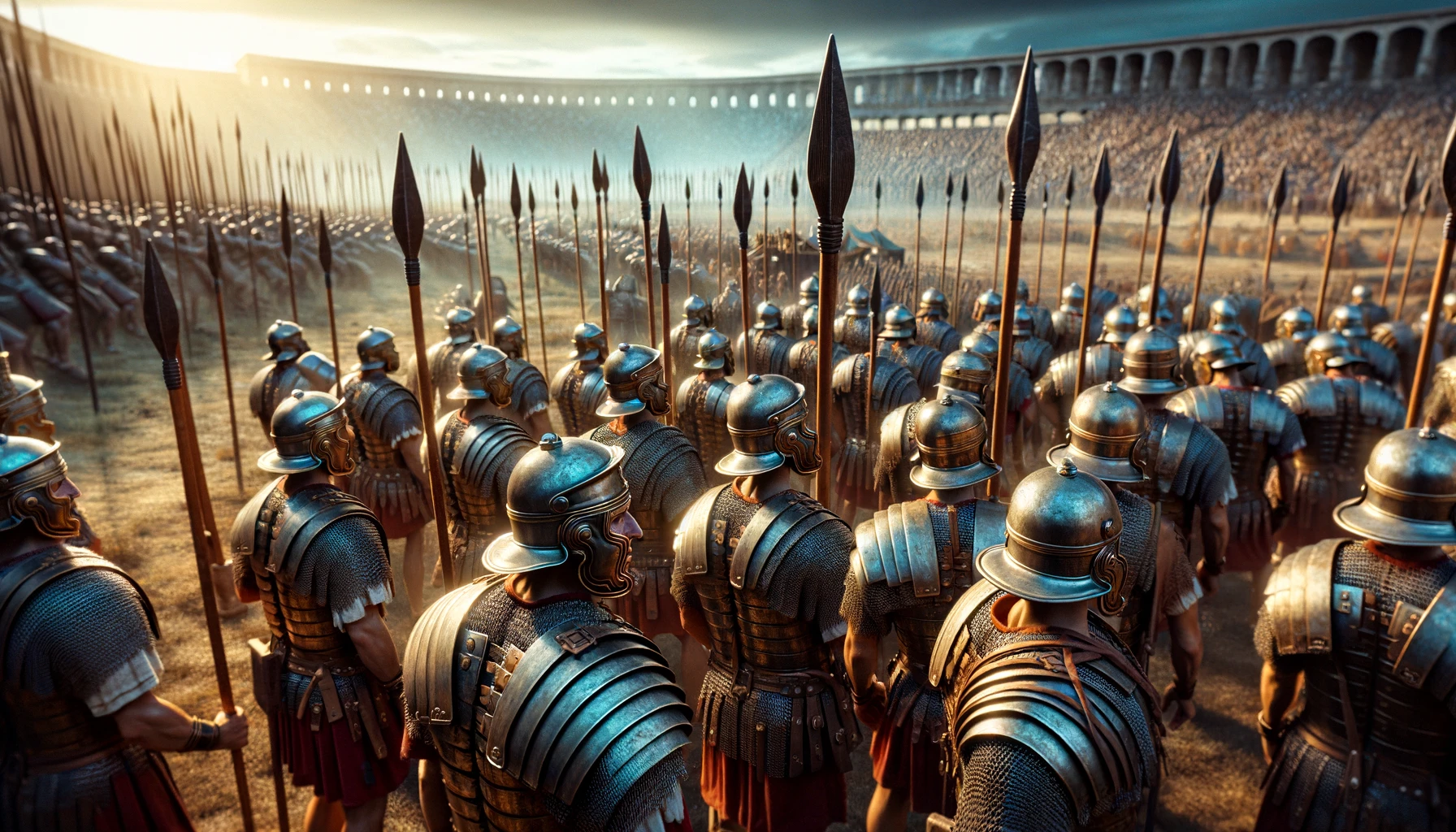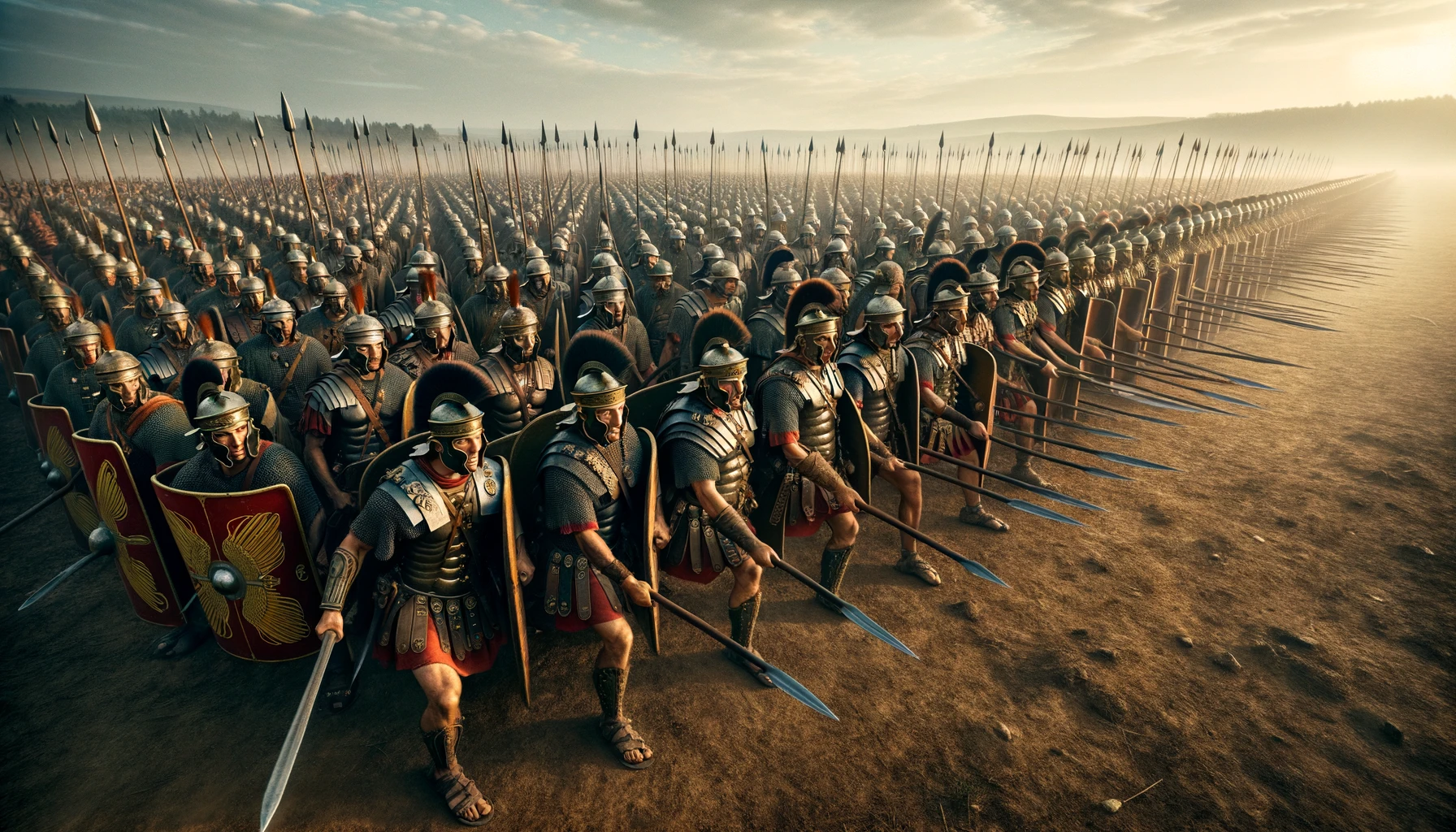Pilums
Introduction to the Pilum: The Classic Weapon of Roman Legionaries
The pilum is more than just a weapon; it represents a symbol of great Roman military engineering. Its smart design and durable materials make it an effective tool on the battlefield. Each pilum was made to penetrate enemy armor, making it essential for legionaries in ancient Rome.
The versatility of the pilum is remarkable. It was used both at a distance and in hand-to-hand combat, allowing soldiers to have multiple tactical options. Its use dates back centuries, and its legacy is still present in modern military culture. From its design to its manufacturing, every aspect of the pilum deserves to be known.
Technical Characteristics of the Pilum
Pilums varied in size and design, but generally, they were characterized by a robust structure and a sharp head. These features allowed them to be thrown with great precision. Additionally, the weight of the pilum was strategically distributed to enhance its balance, making it intuitive to handle for the Roman soldier.
The pilum models adapted to different situations, allowing legionaries to be more flexible in combat. In this category, we offer a variety of pilums that reflect this rich history and tradition. Each one is designed with attention to detail, ensuring a balance between durability and effectiveness.
The Importance of the Pilum in Roman Military Strategies
The use of the pilum made a significant difference in the battle tactics of ancient Rome. By throwing these javelins before an assault, legionaries could weaken enemy lines. This created an ideal opening for a frontal attack, where Roman infantry could take advantage of the confusion and disorganization of the adversary.
This strategy was an integral part of how Rome conquered vast territories. The combination of military engineers designing effective weapons like the pilum and the superior tactics of the legions were key factors in their success. Thus, each pilum is not only a weapon but also a fundamental piece of Roman military strategy.
Materials and Manufacturing Process of the Pilum
The pilum was made from the best materials available at the time, including forged iron and wood. These materials ensured that the weapon was strong and effective. Manual forging was an art that allowed for the creation of high-quality pilums, each unique in its design and functionality.
The skilled labor ensured that each pilum could withstand the rigors of combat. In our store, we offer handcrafted pilums that respect traditional techniques. This attention to detail translates not only into a combat object but also allows collectors and enthusiasts to enjoy an authentic piece of history.
Modern Uses of the Pilum
Today, the pilum is appreciated not only for its historical and military value but also for its use in various recreational activities. It is common to see pilums in throwing competitions or historical reenactment events, where enthusiasts can experience firsthand what combat was like in ancient Rome.
Modern pilum models allow history and recreation aficionados to revive the tradition. Furthermore, their aesthetic design makes them ideal decorative pieces for any collector or history lover. Exploring the pilum means appreciating both its functionality and its rich history, making this category something unique.
What is a pilum and what is its main function?
The pilum is a spear used by Roman soldiers, designed to be thrown with great precision and cause damage to the enemy. Its design allows it to pierce armor, making its main function to weaken the adversary before hand-to-hand combat.
What is the difference between a pilum and a Roman dart?The main difference lies in their design and use. While the pilum is heavier and more robust, intended to be thrown with force, the Roman dart tends to be lighter and is used in ranged combat situations. Both have their place in Roman military strategy but serve different roles on the battlefield.
Why is it important that pilums are handmade?Handmade manufacturing ensures the quality and authenticity of the pilum. Artisans can pay attention to every detail, resulting in weapons that are not only functional but also representative of the manufacturing techniques of Roman times. This is especially valuable for collectors and reenactors seeking authentic pieces.
Can pilums be used in competitions?Yes! Pilums are used in throwing competitions and historical reenactments. These activities allow participants to experience the combat techniques of the ancient Romans and appreciate the skill required to handle these weapons. However, it's important to follow safety guidelines when using them in competitions.
What materials are used in the fabrication of pilums?Pilums are traditionally made with forged iron for the head and wood for the shaft. These materials ensure that they are strong and fulfill their purpose in combat. Nowadays, forging techniques that respect ancient methods are used to maintain the authenticity of the pilum.
How was a pilum thrown on the battlefield?The technique for throwing a pilum involved a combination of strength and precision. Legionaries were trained to throw the pilum in a fluid motion, using its weight to ensure it reached the enemy with great speed. This skill was crucial for maximizing impact in combat.
Is maintenance of the pilum necessary?Yes, it is essential to maintain the pilum in good condition to ensure its functionality. This may include cleaning oxidation from the metal and checking that the wooden shaft is free from damage. A well-maintained pilum is not only more effective in combat or competition but also preserves its historical value.
Discover our exciting category of Pilums, where history and functionality come together. Here you will find the best options for military history enthusiasts and collectors. Don't miss the opportunity to acquire a piece of rich Roman tradition; explore our online store now!





























